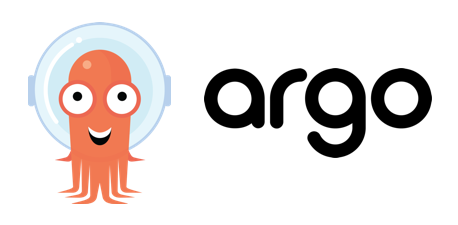安装K8s 安装K8s客户端,此处为下载最新版本。更多安装信息可查看官网文档
1 2 3 curl -LO "https://dl.k8s.io/release/$(curl -L -s https://dl.k8s.io/release/stable.txt) /bin/linux/amd64/kubectl" chmod +x kubectl sudo install kubectl /usr/local /bin/
安装服务端,官方提供了三个工具 ,Kind 、Minikube 、Kubeadm
学习时可使用Minikube,安装较为方便。
这里有一个坑,使用阿里云国内镜像源启动k8s服务时,阿里云国内的镜像源可能没有同步至最新版本,导致版本不匹配,所以选择版本时请随时查看阿里云支持的版本。
1 2 3 4 5 6 7 8 9 10 11 12 13 14 15 curl -LO https://storage.googleapis.com/minikube/releases/latest/minikube-linux-amd64 sudo install minikube-linux-amd64 /usr/local /bin/minikube useradd minikube sudo usermod -aG docker minikube && newgrp docker su minikube minikube start --driver=docker --image-mirror-country='cn' --image-repository='registry.cn-hangzhou.aliyuncs.com/google_containers'
Argo-framework部署
https://github.com/argoproj/argo-workflows/releases
部署Argo 服务 1 2 3 4 5 6 7 8 9 10 11 12 13 14 15 16 # 创建命名空间 kubectl create ns argo # 通过Yaml启动服务 kubectl apply -n argo -f https://raw.githubusercontent.com/argoproj/argo-workflows/stable/manifests/quick-start-postgres.yaml # 查看PODS信息 kubectl get pods -n argo # 查看服务器IP信息 kubectl -n argo get svc # 将web服务映射到127.0.0.1:2746 kubectl -n argo port-forward deployment/argo-server 2746:2746 # Nginx反向代理出2746端口
部署ArgoEvent ArgoEvent需要单独部署,默认是没有的
1 2 3 4 # 创建命名空间 kubectl create namespace argo-events wget https://raw.githubusercontent.com/argoproj/argo-events/stable/manifests/install.yaml kubectl apply -n argo -f install.yaml
Argo基础
此处的概念理解,为本人初次学习的理解,不保证完全正确,欢迎勘误。
概念:
Argo EventSource: 用于定义事件属性,触发的条件。支持File、Redis、Webhook、Github、Kafka等20多种事件源。使用时可通过定义传感器(Sensor)来设置事件依赖(depencies)以及设置触发器触发相应的操作。
Argo Yaml语法 EventSource示例 1 2 3 4 5 6 7 8 9 10 11 12 13 14 15 16 17 18 19 20 21 22 23 apiVersion: argoproj.io/v1alpha1 kind: EventSource metadata: namespace: argo name: file spec: template: container: volumeMounts: - mountPath: /test-data name: test-data volumes: - name: test-data emptyDir: {} file: example: watchPathConfig: directory: /test-data/ eventType: WRITE
Workflow-step示例 1 2 3 4 5 6 7 8 9 10 11 12 13 14 15 16 17 18 19 20 21 22 23 24 25 26 27 28 29 30 31 32 33 34 35 36 37 38 templates: - name: hello steps: - - name: hello1 template: whalesay arguments: parameters: - name: message value: "hello1" - - name: hello2a template: whalesay arguments: parameters: - name: message value: "hello2a" - name: hello2b template: whalesay arguments: parameters: - name: message value: "hello2b" - - name: hello3 template: whalesay arguments: parameters: - name: message value: "hello3" - name: whalesay inputs: parameters: - name: message container: image: docker/whalesay command: [cowsay ] args: ["{{inputs.parameters.message}} " ]
其中- -表示与前面的任务串行,前面的任务完成后才能继续。-表示可以并行执行
Workflow-IF示例 1 2 3 4 5 6 7 8 9 10 11 12 13 14 15 16 17 18 19 20 21 22 23 24 25 26 27 28 29 30 templates: - name: coinflip steps: - - name: flip-coin template: flip-coin - - name: heads template: heads when: "{{steps.flip-coin.outputs.result}} == 1" - name: tails template: tails when: "{{steps.flip-coin.outputs.result}} == 0" - name: flip-coin script: image: python:alpine3.6 command: [python ] source: | import random print(random.randint(0,1)) - name: heads container: image: alpine:3.6 command: [sh , -c ] args: ["echo \"it was heads\"" ] - name: tails container: image: alpine:3.6 command: [sh , -c ] args: ["echo \"it was tails\"" ]
1 2 3 4 5 6 7 8 9 10 11 12 13 14 15 16 17 18 19 20 21 22 23 24 25 26 27 28 29 30 31 templates: - name: output-parameter steps: - - name: generate-parameter template: whalesay - - name: consume-parameter template: print-message arguments: parameters: - name: message value: "{{steps.generate-parameter.outputs.parameters.hello-param}} " - name: whalesay container: image: docker/whalesay:latest command: [sh , -c ] args: ["echo -n hello world > /tmp/hello_world.txt" ] outputs: parameters: - name: hello-param valueFrom: path: /tmp/hello_world.txt - name: print-message inputs: parameters: - name: message container: image: docker/whalesay:latest command: [cowsay ] args: ["{{inputs.parameters.message}} " ]
Workflow-Loop示例 1 2 3 4 5 6 7 8 9 10 11 12 13 14 15 16 17 18 19 20 21 22 23 24 25 26 27 28 29 30 31 32 33 34 35 36 37 38 39 40 41 42 43 apiVersion: argoproj.io/v1alpha1 kind: Workflow metadata: generateName: loops-param-arg- spec: entrypoint: loop-param-arg-example arguments: parameters: - name: os-list value: | [ { "image": "debian" , "tag": "9.1" }, { "image": "debian" , "tag": "8.9" }, { "image": "alpine" , "tag": "3.6" }, { "image": "ubuntu" , "tag": "17.10" } ] templates: - name: loop-param-arg-example inputs: parameters: - name: os-list steps: - - name: test-linux template: cat-os-release arguments: parameters: - name: image value: "{{item.image}} " - name: tag value: "{{item.tag}} " withParam: "{{inputs.parameters.os-list}} " - name: cat-os-release inputs: parameters: - name: image - name: tag container: image: "{{inputs.parameters.image}} :{{inputs.parameters.tag}} " command: [cat ] args: [/etc/os-release ]
Workflow-Script示例 1 2 3 4 5 6 7 8 name: gen-number-list script: image: python:alpine3.6 command: [python ] source: | import json import sys json.dump([i for i in range(20, 31 )], sys.stdout)
文中部分例子来自,https://zhuanlan.zhihu.com/p/181692322 、https://blog.csdn.net/qq_39316848/article/details/107688739
使用私有仓库 创建私有仓库 1 2 3 4 5 6 7 8 docker pull registry docker run -d -p 5000:5000 --restart always --name registry registry:2 -v [本地路径]:/var/lib/registry # 向私有仓库推送镜像 docker pull docker.io/lemonbar/centos6-ssh docker tag efd998bd6817 centos6-ssh #改名字 docker rmi docker.io/lemonbar/centos6-ssh docker tag centos-ssh 192.168.0.112:5000/centos6-ssh docker push 192.168.0.112:5000/centos6-ssh
Minikube从私有仓库拉取 1 2 3 4 # 如果已经安装minikube,则先删除 minikube delete # 设置内部仓库地址 minikube start --driver=docker --image-mirror-country='cn' --image-repository='registry.cn-hangzhou.aliyuncs.com/google_containers' --insecure-registry=192.168.0.112:5000
K8s拉去镜像时标记为私有镜像源
1 2 3 4 5 6 7 8 9 10 11 12 13 apiVersion: v1 kind: Pod metadata: name: kubia-manual spec: containers: - image: 192.168 .0 .112 :5000/kubia name: kubia ports: - containerPort: 8080 protocol: TCP

文章评论